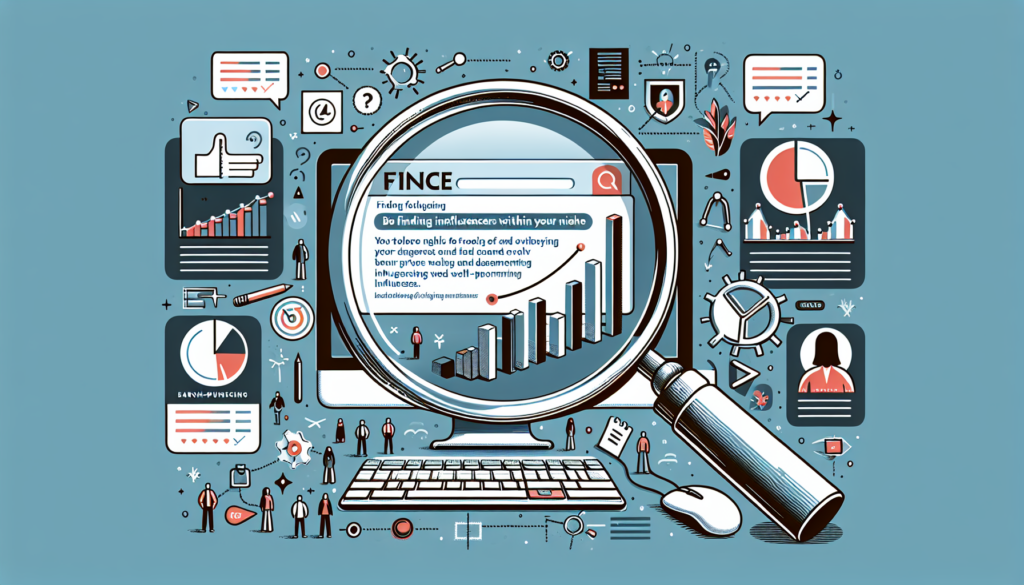The value of an influencer in the digital marketing strategy is unquestionable. Not only do they have the ability to increase the visibility of a brand but also to influence the purchasing decisions of their audience. To fully leverage their potential, companies must equip themselves with the right tools to find and evaluate influencers who truly resonate with their market niche.
Finding Influencers: Advanced Tools and Strategies
To locate the most suitable influencers for a specific campaign, brands can turn to sophisticated tools that go beyond the count of followers.
Social Network Analysis and Predictive Algorithms
Platforms like BuzzSumo and Traackr use advanced algorithms to monitor online content and behavior, identifying individuals with high engagement and thematic relevance. These systems assess effective interaction and influence in digital conversation, much more than superficial reach.
Artificial Intelligence and Machine Learning
Upfluence and Heepsy are examples of services that implement artificial intelligence (AI) and machine learning to discover emerging influencers, often before they are identified by the competition. These technologies also predict the future relevance of an influencer based on audience growth and interaction.
Segmentation and Semantic Search
The ability to filter influencers by demographics, interests, and specific keywords is crucial. Tools like Klear and Brandwatch offer advanced semantic search functionalities, allowing brands to locate relevant content creators who align with their values and business goals.
Evaluating Influencers: Metrics and Detailed Analysis
Once influencers have been identified, it is vital to assess their suitability and potential return on investment (ROI) through meticulous analysis.
Engagement and Audience Quality
The level of active interaction an influencer has with their audience, measured through likes, comments, and shares, is indicative of the quality of their relationship. HypeAuditor conducts a deep analysis of the audience, detecting fake accounts and bots to ensure the legitimacy and genuine commitment of the influencer.
Consistency and Content Relevance
Thematic coherence and consistency in posting are important factors. A detailed evaluation of the content posted by the influencer, to determine the cohesion with the brand identity, is critical. Tools like CreatorIQ provide content analysis that can shed light on the alignment between the influencer and the brand.
Predictive ROI Analysis
Predictively, platforms like Neoreach offer simulations based on past data to project possible outcomes of a collaboration. Using this information can optimize the effectiveness of future campaigns and investments in influencer marketing.
Comparisons and Case Studies
It is instructive to compare these search and evaluation tools with more traditional methodologies, such as manual selection or recommendations. Technological advances in data analysis and machine learning provide a significant advantage in speed and accuracy.
Case studies highlight how brands like Gymshark and Daniel Wellington have scaled their online presence through strategic collaborations with influencers. These stories not only show tangible success but also the analytical processes underlying the collaboration decisions.
Innovations and the Future of Influencer Evaluation
The trajectory of influencer marketing suggests a trend towards personalization and authenticity. The next generation of tools could integrate sentiment analysis and recognition of voice and images to more precisely discern the emotional resonance an influencer has within a specific niche.
Artificial intelligence will continue to be refined, providing more accurate forecasts and allowing for even more granular segmentation of audiences. Brands that stay abreast of these innovations and integrate them into their marketing strategies will be better positioned to capitalize on the changing influencer marketing landscape.
In summary, the selection and evaluation of influencers in a given niche should truly be an exercise in precision and analysis. By using current and emerging technologies, brands can discover hidden talents and measure effectively their true impact, ensuring that every investment in influencer marketing is as strategic and informed as possible. With the proper use of specialized tools and detailed analysis, influencer marketing becomes a meticulous and data-based art that can take business goals to the next level.

